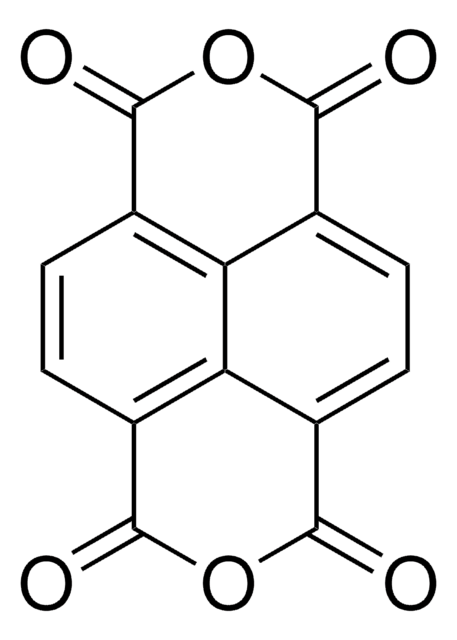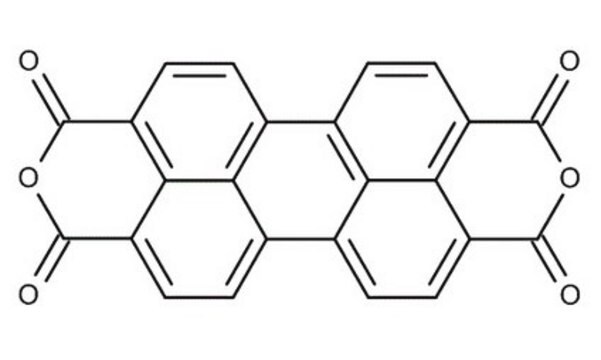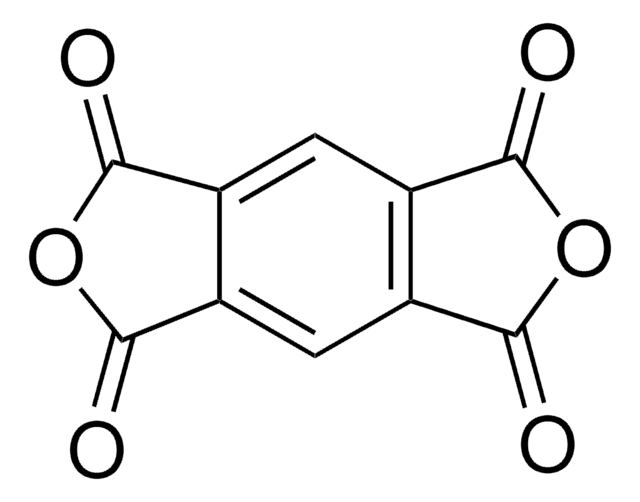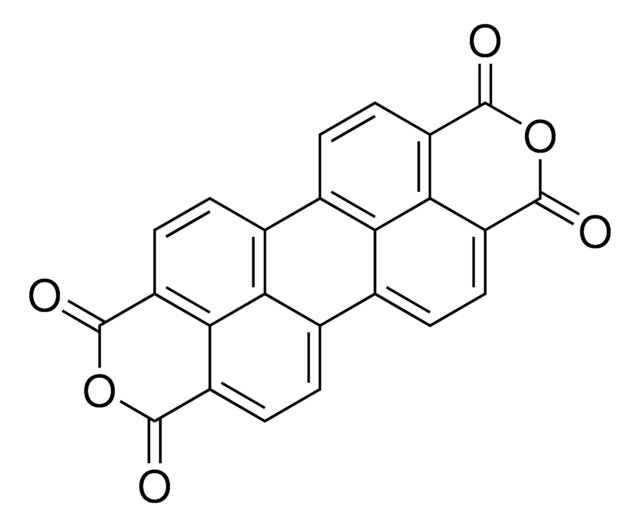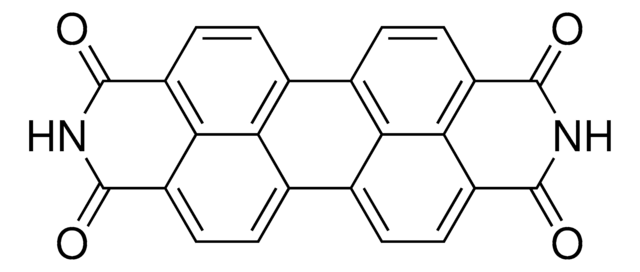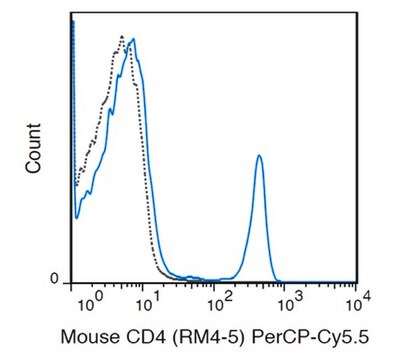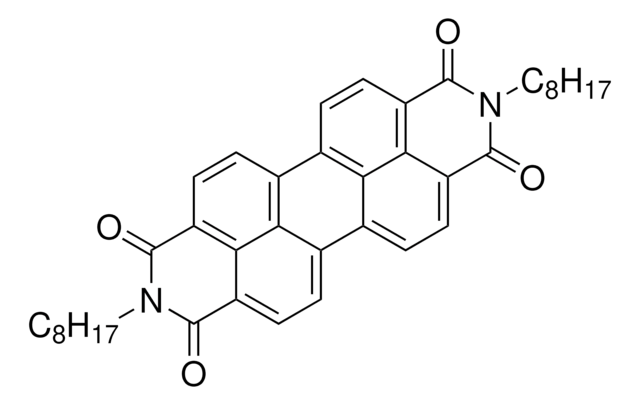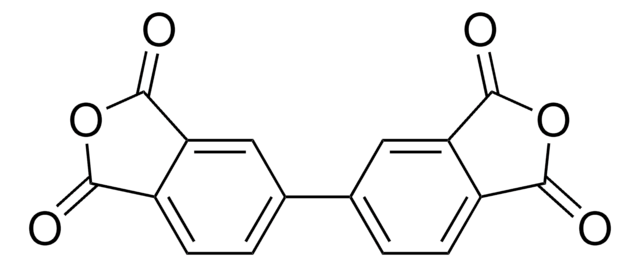Wichtige Dokumente
P11255
PTCDA
97%
Synonym(e):
Perylene-3,4,9,10-tetracarboxylic dianhydride, Pigment Red 224
About This Item
Empfohlene Produkte
Beschreibung
Band gap: 2.1 eV
Qualitätsniveau
Assay
97%
Form
powder
mp (Schmelzpunkt)
>300 °C
Energie der Orbitale
HOMO -6.8 eV
LUMO -4.7 eV
Leistung von OPV-Bauelementen
ITO/CuPc/PTCDA/In
Halbleitereigenschaften
N-type (mobility=10−4 cm2/V·s)
InChI
1S/C24H8O6/c25-21-13-5-1-9-10-2-6-15-20-16(24(28)30-23(15)27)8-4-12(18(10)20)11-3-7-14(22(26)29-21)19(13)17(9)11/h1-8H
InChIKey
CLYVDMAATCIVBF-UHFFFAOYSA-N
Suchen Sie nach ähnlichen Produkten? Aufrufen Leitfaden zum Produktvergleich
Allgemeine Beschreibung
Anwendung
Lagerklassenschlüssel
11 - Combustible Solids
WGK
WGK 1
Persönliche Schutzausrüstung
dust mask type N95 (US), Eyeshields, Gloves
Hier finden Sie alle aktuellen Versionen:
Besitzen Sie dieses Produkt bereits?
In der Dokumentenbibliothek finden Sie die Dokumentation zu den Produkten, die Sie kürzlich erworben haben.
Artikel
Fabrication procedure of organic field effect transistor device using a soluble pentacene precursor.
Professor Chen (Nankai University, China) and his team explain the strategies behind their recent record-breaking organic solar cells, reaching a power conversion efficiency of 17.3%.
Unser Team von Wissenschaftlern verfügt über Erfahrung in allen Forschungsbereichen einschließlich Life Science, Materialwissenschaften, chemischer Synthese, Chromatographie, Analytik und vielen mehr..
Setzen Sie sich mit dem technischen Dienst in Verbindung.